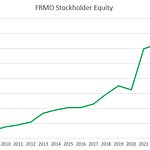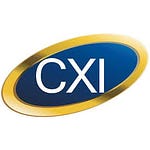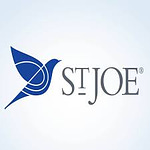Remember you can support the show in the following ways:
To sign up for Strike visit the following link : https://strike.me/en/
To get $10 for you and $10 for me at sign-up use referral code: ZEYDWP
Or contribute to the show directly by visiting: https://buzzsprout.com/1923146
Once on the shows website you can scan the QR code displayed and donate any amount of bitcoin to show your support
Listen to the Special Situation Investing Podcast on Fountain, on Apple Podcasts, on the website, or wherever you listen.
Welcome to Special Situation Investing where we help jump start your research with our real time investment write ups.
Today’s show is based on a hodgepodge of announcements, earnings releases, and corporate events that took place last week. Several of the companies we’ve already covered were part of the action and we thought it worth updating our thesis on the companies in question. So without further ado let’s jump right in.
Last week Office Depot announced relatively flat earnings and revenue, $200mm and $8.5 billion, respectively, for the last twelve months. Revenue is projected to remain unchanged between now and the end of 2025 while earnings per share are slated to nearly double from the low $4/share level to the high $8/share range. Office Depot’s massive 1 billion share repurchase announcement accounts for the change in earning per share estimates despite static revenue projections.
What does this mean for our returns as ODP shareholders? Let’s attempt to answer the question with a gross oversimplification. Assume that margins, revenue, sales and all of the other factors that will not remain constant do in fact remain constant between now and the end of 2025, when the 1 billion share repurchase is complete.
In this impossible but useful example, ODPs share price doubles. This is because at today’s nearly 2 billion market cap the company would repurchase 50% of its shares and the $4.00 per share of earnings spread out across 48.6 mm shares becomes $8.00 per share of earnings spread out across only 24.3 mm shares. At a constant P/E of 10 the share price would rise from today's $40 to $80 in 2025.
A double in share price over three years works out to a solid 24% CAGR but let’s not forget all of those pesky variables that we said would remain constant in our previous example. What if they aren’t constant? For starters, even good news could reduce our returns over the full three year repurchase schedule. This is because a near term increase in the stocks price results in fewer shares being repurchased throughout the buyback period.
As stated before a 2 billion market cap combined with a 1 billion share repurchase would double the companies earnings per share. If in the near term, however, the companies stock price rose from $40/share to $80/share then its market cap would also increase from 2 billion to 4 billion and the 1 billion share repurchase would only buy back 25% of the company instead of 50%. In this case earnings per share increase from $4/share to about $5.40/share or approximately a 35% return over three years from the $80/share starting point. A 35% return over three years results in a CAGR of only 10.5%, a much less compelling CAGR than the 24% per year offered from the $40/share starting point mentioned previously.
We now understand that an increased share price reduces the amount of shares a company can repurchase which then reduces our earning per share gain and overall return on investment. Ideally, Office Depot’s share price would decline during the share buyback period so that the 1 billion allocated to the buyback would repurchase as many shares as possible, but this isn’t likely given the publicly announced repurchase plan.
Because the repurchase was publicly announced investors are less likely to sell at any significant discount below the current price. Investors will know that the company is repurchasing its shares and will if anything demand a price fairly close to the price per share when the buyback announcement was made. In this case the shares traded around $40 dollars on the day of the announcement.
Considering the variables we’ve covered so far, I plan to begin selling my shares as soon as I realize a 15% or greater return. Holding Office Depot for three years in the hopes of a 24% CAGR exposes me to a multitude of risks to include the risk of a reduced P/E multiple, increased capital expense, decreased earnings, or a failure of management to see the strategy through to completion. Showing a reasonable return on investment during a year where the major indexes are down significantly is a success in itself and I see no reason to expose myself to further risk by holding Office Depot through the end of 2025.
With that short analysis completed, let’s contrast Office Depots massive share repurchase with Texas Pacific Lands proportionally smaller $250 mm share repurchase program that was announced on the same day. Office Depot, is set to repurchase half of it’s outstanding shares and I’m happy to sell with a 15% return. While Texas Pacific Land, up nearly 100% for the year, has announced a mere 1% share repurchase program, and I plan to hold it for years into the future.
My thinking behind this apparent incongruity can be summarized as follows: keep the compounders and sell the workouts. Texas Pacific is a compounder that continues to improve its economics year after year. Last quarter they announced a bitcoin mining venture and this quarter they announced a solar generation partnership and all of these businesses follow the low cost, low capex royalty approach. The company gets more valuable with each passing year and while the price may get ahead of the business at times the underlying business is a rare gem that should be left alone to compound.
Office Depot on the other hand is a workout. It started as a spin-off, then shifted to a private sale, and finally turned into an “Uber Cannibal” via it’s massive share repurchase program. Any one of these paths will “re-value” the shares to a higher price but the underlying business itself isn’t compounding at a high rate and therefore is unlikely to payoff for long term investors.
While we’re on the topic of all things quarterly earnings, Garrett Motion issued a press release stating that “they don’t respond to rumors but that they’re exploring all options to include the sale of the business.” Apparently the information was leaked and came as a surprise to the market, resulting in a significant rise in the share price following the 2 November press release.
I bring this up only as it relates to the topic of this write up, know when to hold’em and know when to fold’em. Garrett Motion is crushing its debt repayment plan and proving to be a very solid operator, but in the end I’d still classify it as a workout. Meaning that if the share price were to rise to the low end of the post “normalized capital structure” value, about $10/share, I would take my profits and move on before I’d wait for a company sale to go through.
On the positive side for Garrett Motion, Oaktree and Centerbridge partners are still significant shareholders and will only agree to a buyout if the price is right. Having the likes of Howard Marks on your side is a great way to go into a negotiated sale and this factor should be a tailwind to us retail investors.
Our final update following last weeks flurry of earnings reports, announcements, and corporate events is the completion of XPO Logistics, RXO Logistics spin-off. RXO sold-off substantially in its first few days of trading and now sits at a 1.8 billion market cap that’s just six times its 300 mm in trailing twelve month EBITA. With its capex light transportation brokerage business model this may be a company worth taking a position in. Brokering truck transportation without actually owning trucks and warehouses should serve to insulate the companies margins from increased input costs in the years ahead.
Well that does it for today's hodgepodge of investment announcements and concepts. I hope you have a better understanding now of which investments to hold, which investments to sell, and how to determine your exit point. We’ll be back again next week with another write up or investment summary and as always we thank you for your support.
SUBSTACK-ONLY BONUS
Howard Marks is the founder and CEO of Oaktree Capital (mentioned in the write-up above as a large shareholder of Garrett Motion). His book on investment wisdom — The Most Important Thing — is for both novice and experienced investors and a must-read in our opinion. Also, Marks regularly writes memos on investing topics that he makes publicly available on Oaktree’s website. Check out the memos HERE.














Know when to hold'em and know when to fold'em